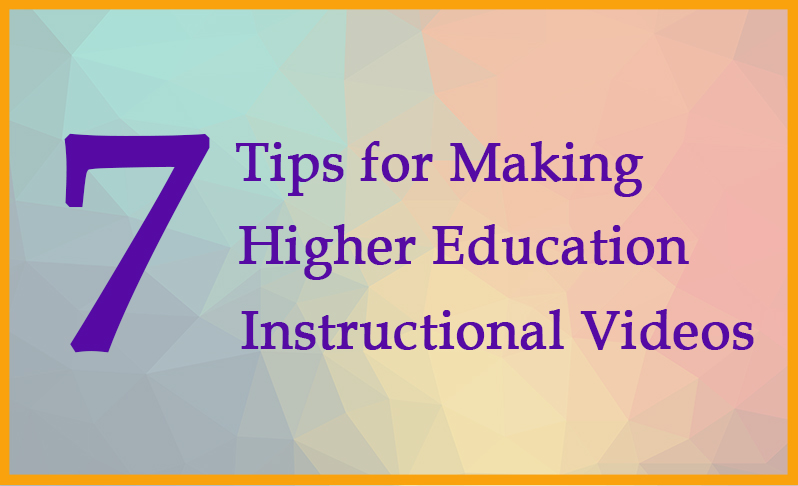Recently we have been involved with a Professional Learning Community on Flipping the Classroom as well as creating our Teacher’s Toolbox, an on-demand professional development website where faculty can access informative videos on a range of subjects. In both cases, a key component is the instructional video, so we have been working on guidelines for effective videos whether they are aimed at faculty or students.
- Have the goal of producing deep learning. In our Achieving Excellence in Teaching (New Forums: Stillwater, 2014), we state, “Deep Learners build new knowledge on previous knowledge (a process that is accelerated when the learner cares about the subject under consideration), critically analyze the new knowledge, and, because of the new knowledge, even change their mental model of reality” (15). You want your video to stick in the mind of your audience and hopefully alter that mind’s way of perceiving the world.
- Keep it brief. Just as mini-lectures in class lose their audience after about ten minutes, so the attention of the video audience will fall off at just about the same rate. Shoot for the ten-minute limit, and try not to go much over it.
- Tell a story. Right now we’re shooting a video about the demographics of the typical EKU student. It starts at a first-year dorm and ends in the place where graduation is held. In other words, we are replicating the typical journey of an EKU student. We have experience writing film and TV scripts, but all you need is a rough outline.
- Focus on fundamental and powerful concepts. In ten minutes you can’t produce a documentary or even a short-short, but you don’t want to. As Gerry Nosich points out in Learning To Think Things Through (Upper Saddle River: Pearson, 2009), “A fundamental and powerful concept is one that can be used to explain or think out a huge body of questions, problems, information, and situations” (105). Obviously, when we researched the EKU student demographics, we came across reams of data, but we distilled that information down to the most basic details that relate to our students’ ability to learn.
- Emphasize the visual quality. Of course, in a video this guideline sounds obvious, but too many videos look like a painter’s capturing of still life. In Brain Rules (Seattle: Pear Press, 2008), John Medina says, “Put simply, the more visual the input becomes, the more likely it is to be recognized—and recalled… If information is presented orally, people remember about 10%, tested 72 hours after exposure. That figure goes up to 65% if you add a picture” (233-4). Add charts, maps, short videos, and images to your videos to engage your audience.
- Use interesting angles. A ten-minute video of you sitting at your desk intoning about the Boer Wars is a poor substitute for a map, a short movie clip, and some actual pics. Our ancestors, the reason you are here today, walked an average of 12 miles a day learning to survive. This motion, even if a different angle, may be the key to your audience surviving to the end of your video.
- Try for good, if not professional quality. Simple software like Avid, Adobe Premier Elements, iMovie, Camtasia Studio, or Moviemaker will help. So will practice. Most of us have not spent a few semesters in film school, but watching someone else’s videos will help.
Author
 Ph.D Hal Blythe writes literary criticism to mystery stories. In addition to the eleven books he’s published with New Forums, Hal has collaborated on four books on a variety of subjects, over 1000 pieces of fiction/nonfiction, and a host of television scripts and interactive mysteries performed by their repertory company. He is currently co-director of the Teaching and Learning Center for Eastern Kentucky University. Meet Hal Blythe.
Ph.D Hal Blythe writes literary criticism to mystery stories. In addition to the eleven books he’s published with New Forums, Hal has collaborated on four books on a variety of subjects, over 1000 pieces of fiction/nonfiction, and a host of television scripts and interactive mysteries performed by their repertory company. He is currently co-director of the Teaching and Learning Center for Eastern Kentucky University. Meet Hal Blythe.



